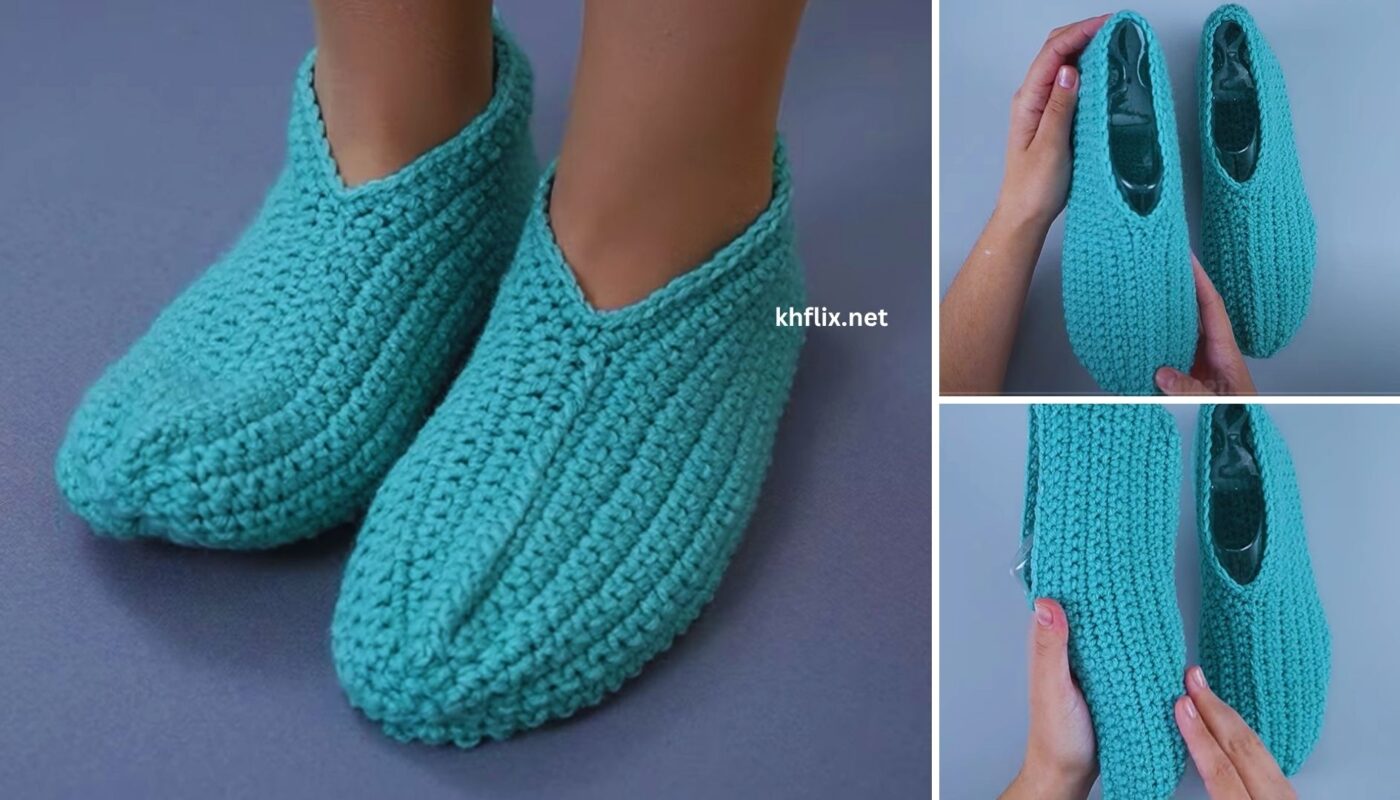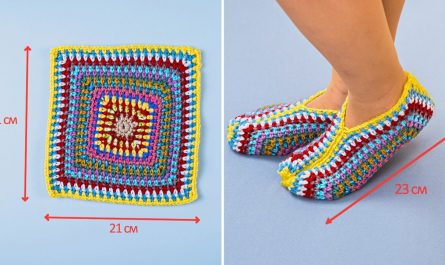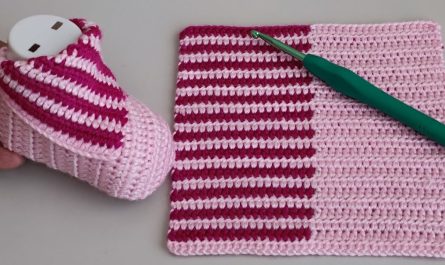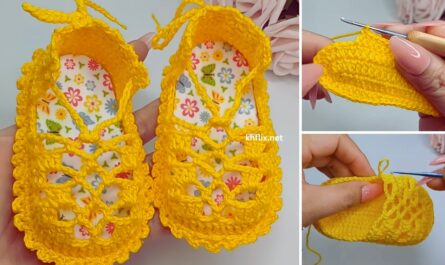Let’s create cozy and comfortable crochet slippers without a seam on the sole, perfect for beginners! This detailed tutorial will guide you through each step, ensuring you end up with a pair of soft, seamless slippers that are ideal for lounging around the house. The seamless sole construction makes them extra comfortable and durable.
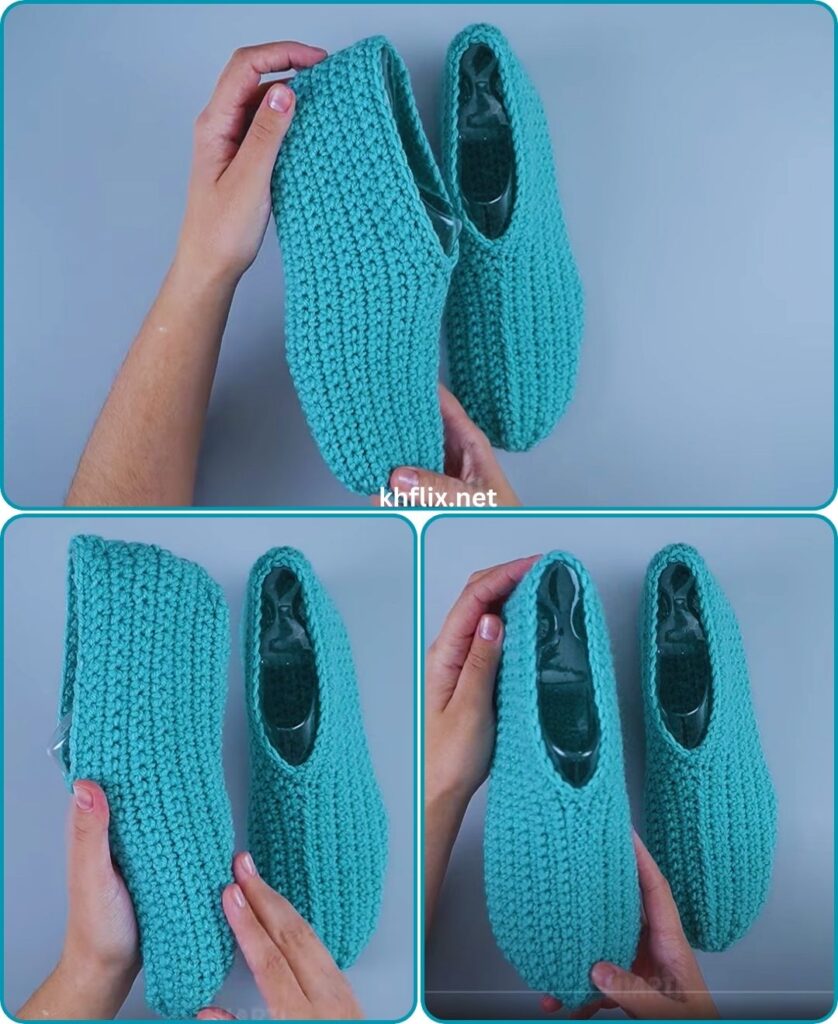
How to Crochet Seamless Sole Slippers for Beginners: A Step-by-Step Tutorial
This pattern is designed to be beginner-friendly, focusing on simple stitches and a clever construction method that avoids a bulky seam on the bottom of your foot. You’ll work the sole and lower sides of the slipper in one continuous piece, then build up the top.
Skill Level: Beginner
You’ll need to know:
- Chain (ch): The foundation of most crochet projects.
- Slip Stitch (sl st): Used for joining rounds and finishing.
- Single Crochet (sc): A compact, dense stitch, great for slipper soles.
- Half Double Crochet (hdc): A stitch taller than sc but shorter than dc, often used for comfortable fabric.
- Double Crochet (dc): A taller stitch that works up quickly.
- Working in rounds: Crocheting in a continuous spiral or joined circles.
- Increasing: Adding stitches to expand your work (for shaping the sole).
- Working in BLO (Back Loop Only): Creates a defined ridge.
Finished Slipper Dimensions (Approximate):
This pattern is written for an Adult Medium (US Women’s 7-9, US Men’s 6-8). You can adjust the size by changing the starting chain and number of increase rows for the sole.
- Sole Length: Approx. 9-10 inches (23-25 cm)
- Slipper Height: Approx. 3-4 inches (7.5-10 cm) at the ankle
Materials You’ll Need:
- Yarn: Approximately 150-200 yards (137-183 meters) of Worsted Weight (Medium #4) Yarn.
- Recommended: A durable and soft acrylic or wool blend yarn. Avoid cotton as it might not be as warm or stretchy enough for slippers. A yarn with a bit of stretch will make for more comfortable slippers. Choose any color(s) you like!
- Crochet Hook: Size H/5.0mm. Or the hook size that gives you a firm but flexible fabric. A dense fabric is good for slippers to prevent them from stretching out too much.
- Yarn Needle (Tapestry Needle): Essential for weaving in ends and seaming.
- Scissors: For cutting yarn.
- Stitch Markers (Highly Recommended): At least two, to mark the start of rounds and specific stitches for shaping.
Gauge (Important for Sizing!):
Getting your gauge right is crucial to ensure your slippers fit well.
- In single crochet: 14 sc and 16 rows = 4 inches (10 cm).
- How to check your gauge:
- Chain 16.
- Sc in the 2nd chain from your hook and in each chain across (you’ll have 15 sc).
- Work 16 rows of sc (ch 1, turn, sc in each st across).
- Measure your swatch. If it’s smaller than 4×4 inches, try going up a hook size. If it’s larger, try going down a hook size. Adjust until your swatch matches the gauge.
Abbreviations Used in This Pattern:
- ch: chain
- sl st: slip stitch
- sc: single crochet
- hdc: half double crochet
- dc: double crochet
- st(s): stitch(es)
- inc: increase (work 2 sc, hdc, or dc in the same stitch, as specified)
- dec: decrease (work 2 sc, hdc, or dc together, as specified)
- rep: repeat
- BLO: back loop only
- FO: fasten off
- (): repeat instructions within parentheses a specified number of times.
- []: indicates the total number of stitches at the end of a specific round or row.
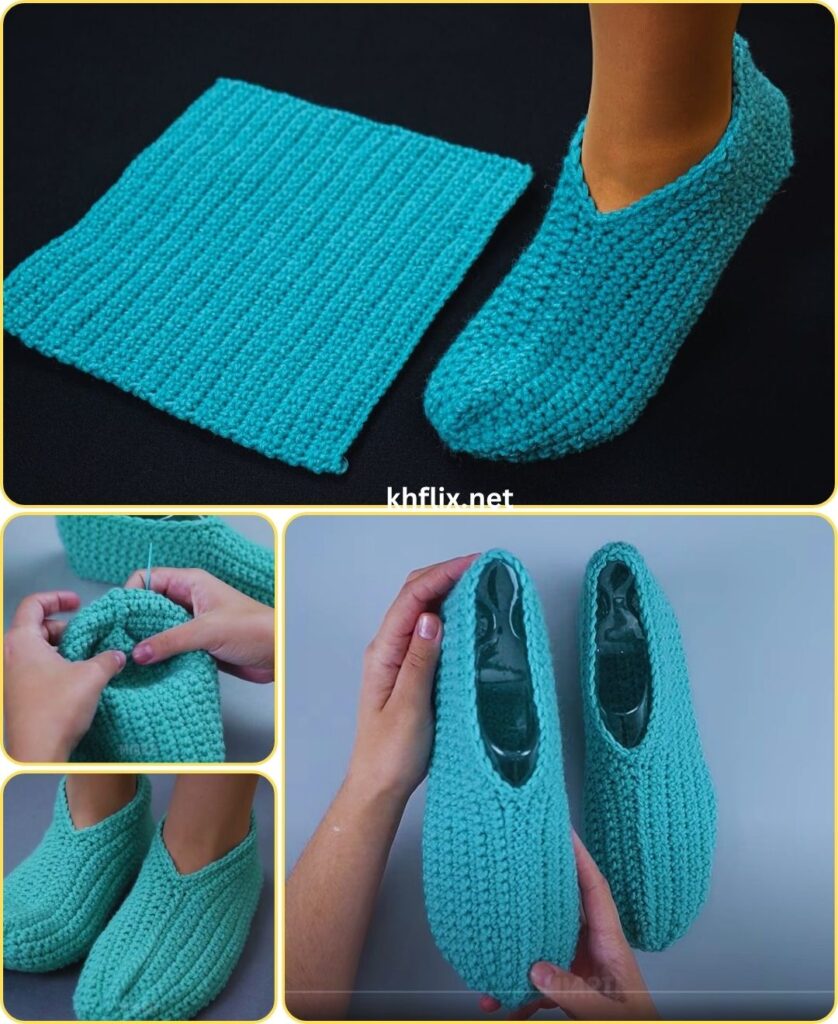
Let’s Crochet Your Seamless Sole Slippers!
The secret to the seamless sole is building it from a chain, working in the round to create an oval, then turning to work up the sides.
Part 1: The Seamless Sole
We’ll create an oval base that will form the sole of your slipper. You’ll work in continuous rounds for this part.
- Foundation Chain:Ch 25.
- Sizing Note: For a smaller size, chain 2-4 stitches less. For a larger size, chain 2-4 stitches more. Each 2 chains roughly equals 1 inch in length.
- Round 1:
- Work 2 sc in the 2nd chain from your hook.
- Sc in the next 22 chains.
- Work 4 sc in the very last chain.
- Now, you’ll rotate your work to crochet along the other side of the foundation chain.
- Sc in the next 22 stitches along the opposite side of the chain.
- Work 2 sc in the very last stitch (this completes the oval).
- [You should have 52 sc stitches.] Do not join this round; we’ll work in a continuous spiral. Place your first stitch marker in the very first sc of this round to mark the beginning of the round.
- Round 2:
- Work 2 sc in the next 2 stitches (these are your increases for the toe).
- Sc in the next 22 stitches.
- Work 2 sc in the next 4 stitches (these are your increases for the heel).
- Sc in the next 22 stitches.
- Work 2 sc in the next 2 stitches.
- [You should have 60 sc stitches.] Move your stitch marker to the new first stitch.
- Round 3:
- (Sc in next st, 2 sc in next st) rep 2 times.
- Sc in the next 22 stitches.
- (Sc in next st, 2 sc in next st) rep 4 times.
- Sc in the next 22 stitches.
- (Sc in next st, 2 sc in next st) rep 2 times.
- [You should have 68 sc stitches.] Move your stitch marker.
- Sizing Note: For smaller sizes, you might stop increasing here or even at Round 2. For larger sizes, you might add another increase round (e.g., Round 4: (Sc in next 2 sts, 2 sc in next st) rep 2 times, sc in next 22 sts, (sc in next 2 sts, 2 sc in next st) rep 4 times, sc in next 22 sts, (sc in next 2 sts, 2 sc in next st) rep 2 times). Your goal is to create a sole that matches the length and width of the bottom of your foot.
Part 2: Building the Slipper Sides (No Seam Transition!)
This is the clever part where we transition from the flat sole to the upright sides of the slipper without a seam on the bottom.
- Round 4 (Creating the “Ridge”):
- Work sc in the back loop only (BLO) of each stitch around.
- [68 sc (or whatever your final stitch count was from the sole)] Move your stitch marker.
- This BLO round creates a visible ridge around the sole, making a clear transition from the sole to the side of the slipper. It also helps the sole lay flat and the sides stand up.
- Round 5:
- Work hdc in each stitch around (working through both loops now).
- [68 hdc] Move your stitch marker.
- Round 6:
- Work hdc in each stitch around.
- [68 hdc] Move your stitch marker.
- Round 7:
- Work hdc in each stitch around.
- [68 hdc] Move your stitch marker.
- Work more or fewer hdc rounds here to adjust the height of the slipper sides before the toe shaping begins. Aim for the height just below your toes.
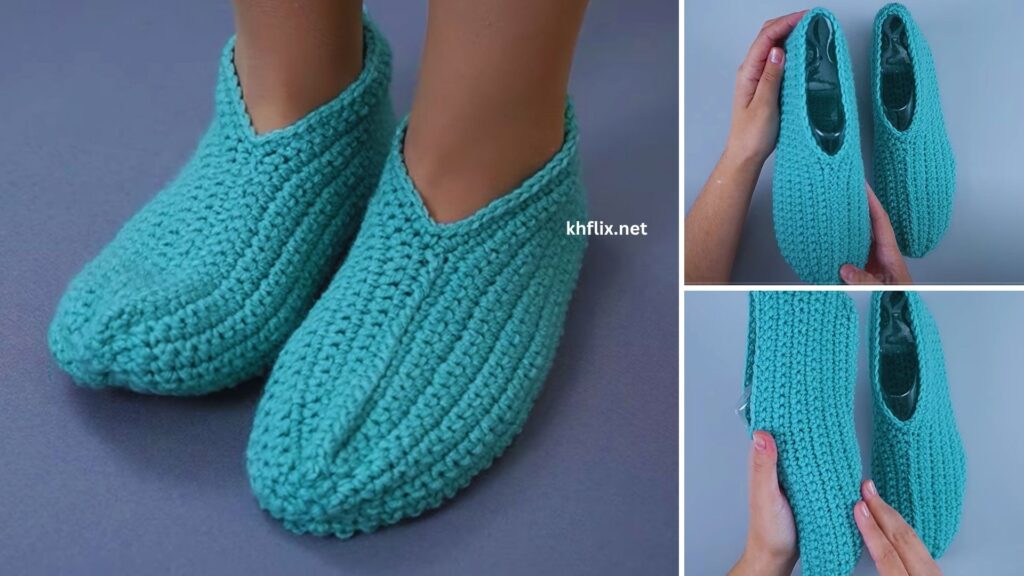
Part 3: Shaping the Toe
Now we’ll start decreasing stitches to form the toe of the slipper.
- Round 8 (Toe Decrease):
- Hdc in the first 25 stitches.
- (Hdc dec) rep 8 times. (This means working 8 hdc decreases over 16 stitches).
- Hdc in the remaining 27 stitches.
- [You should have 60 hdc stitches remaining.] Move your stitch marker.
- Round 9 (More Toe Decrease):
- Hdc in the first 24 stitches.
- (Hdc dec) rep 6 times.
- Hdc in the remaining 24 stitches.
- [You should have 54 hdc stitches remaining.] Move your stitch marker.
- Round 10 (Final Toe Decrease):
- Hdc in the first 23 stitches.
- (Hdc dec) rep 4 times.
- Hdc in the remaining 23 stitches.
- [You should have 50 hdc stitches remaining.] Move your stitch marker.
Part 4: Shaping the Ankle/Top Opening
This section creates the opening for your foot.
- Round 11:
- Hdc in each stitch around.
- [50 hdc] Move your stitch marker.
- Round 12:
- Sc in each stitch around. (A round of sc helps to firm up the ankle opening).
- [50 sc]
- Sl st into the first sc to join the round.
- Fasten Off (FO), leaving a 6-inch tail.
Part 5: Finishing Your Slippers
- Weave in All Ends:
- This is a crucial step for a neat, comfortable, and durable slipper. Thread any loose yarn tails onto your yarn needle.
- Carefully weave them into the stitches on the inside of your slipper. Try to go through the middle of the stitches to fully hide the tails. Weave in one direction for a few stitches, then change direction slightly and weave back through a few more stitches (this locks the tail in place).
- Take your time with this to ensure your slippers look professional and won’t unravel with wear.
- Make the Second Slipper:
- Repeat all steps from Part 1 through Part 4 to create your second slipper. Ensure your tension is consistent between the two slippers for a matching pair!
- Optional: Add a Non-Slip Sole (Highly Recommended!):
- To prevent slipping on smooth floors, you can apply liquid latex or “puffy paint” (fabric paint designed for traction) to the bottom of the soles.
- Turn your slippers inside out, then turn them right side out and put them on your feet to gently stretch them to shape. Take them off.
- On the outside bottom of the sole, apply dots or lines of the non-slip product. Let it dry completely according to the product instructions. You might need multiple coats.
You’ve now created a pair of wonderfully comfortable and seamless sole crochet slippers! Enjoy lounging in your handmade creations. They make fantastic gifts too!

